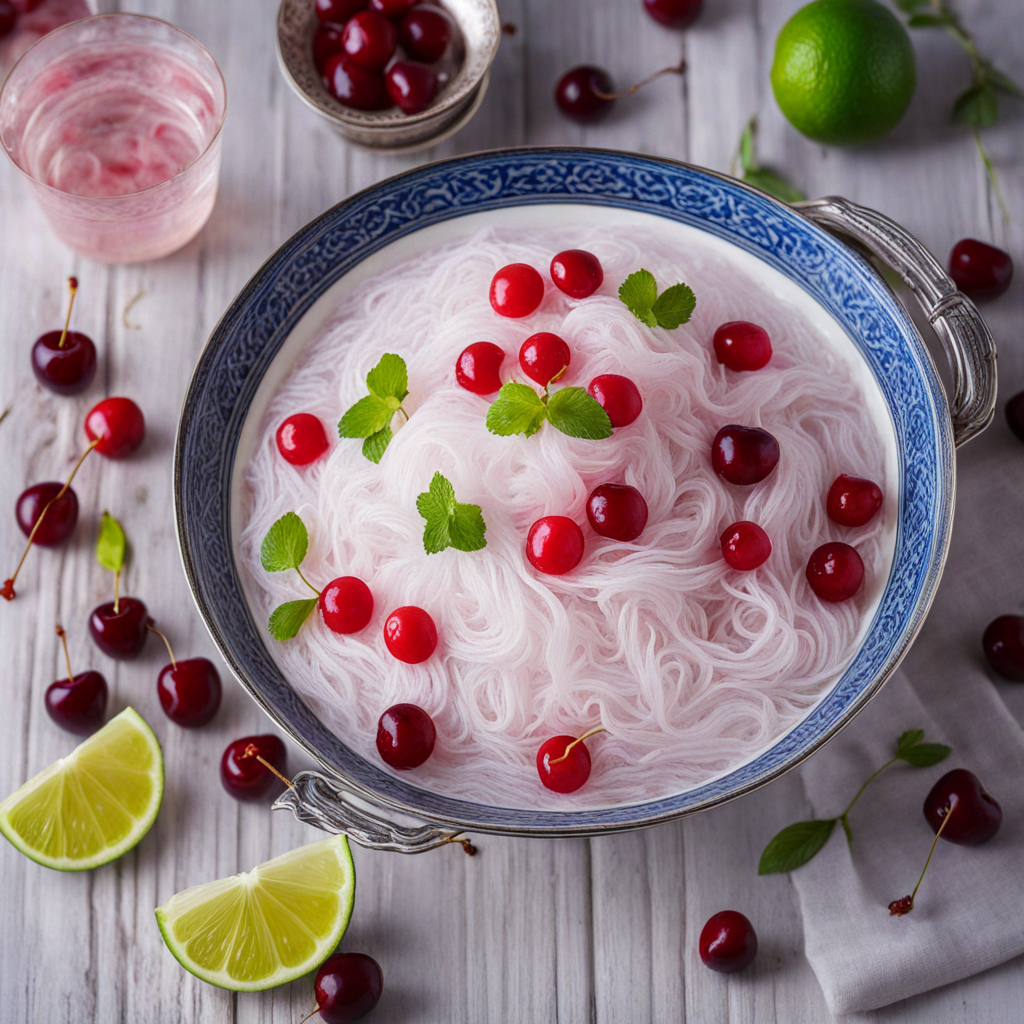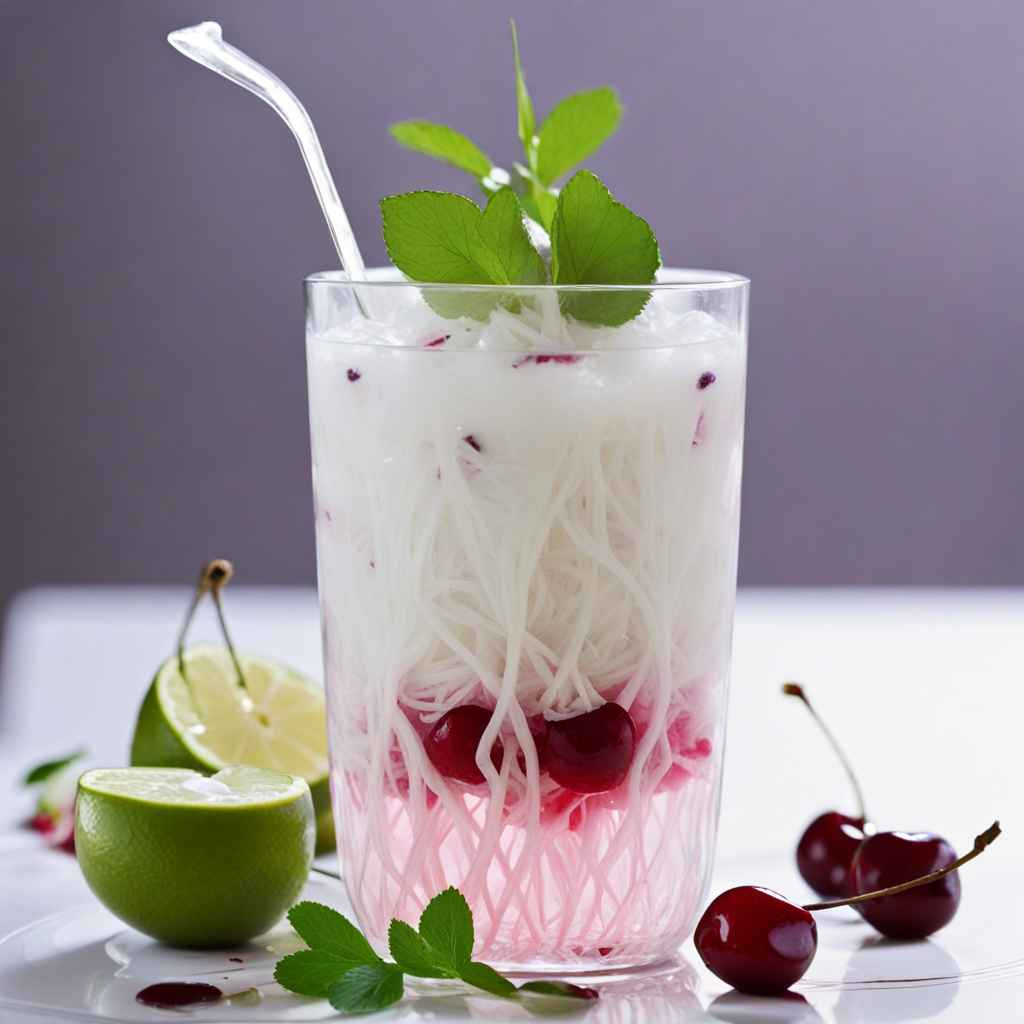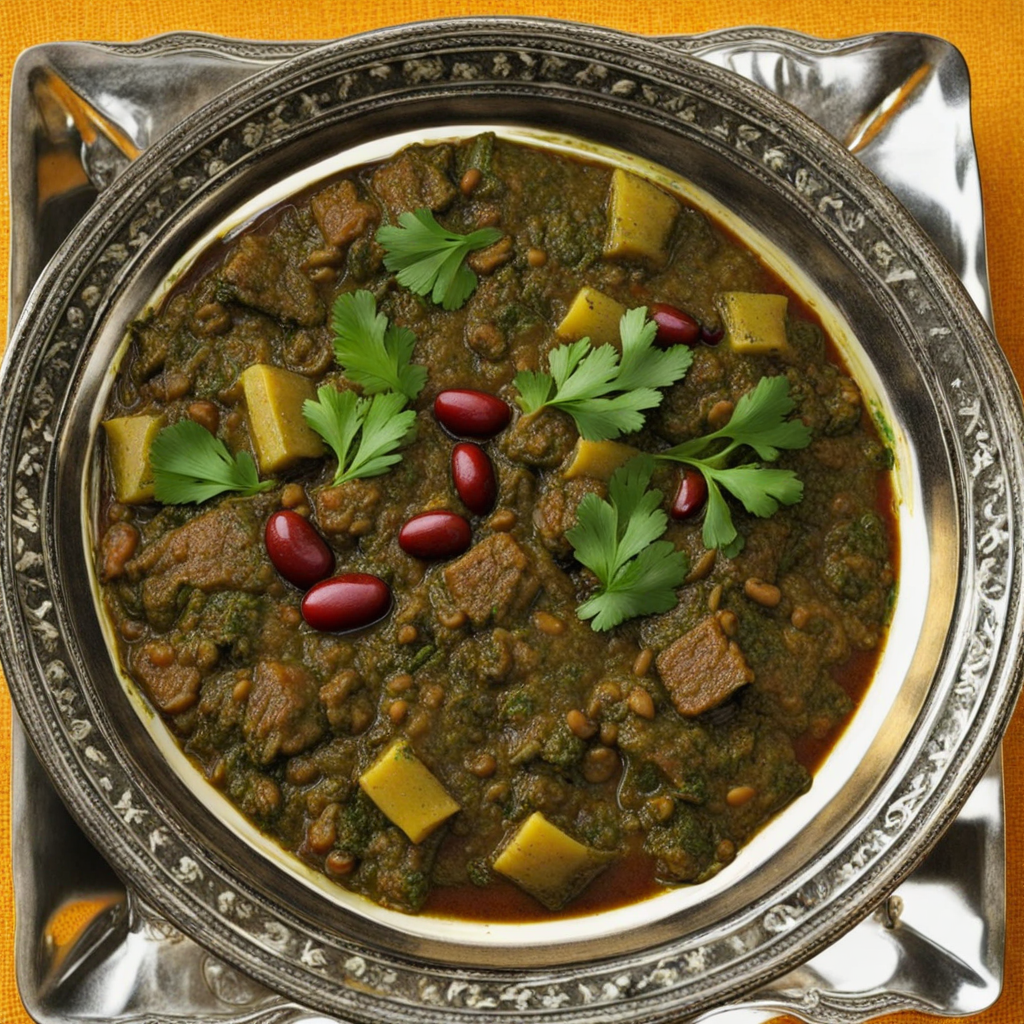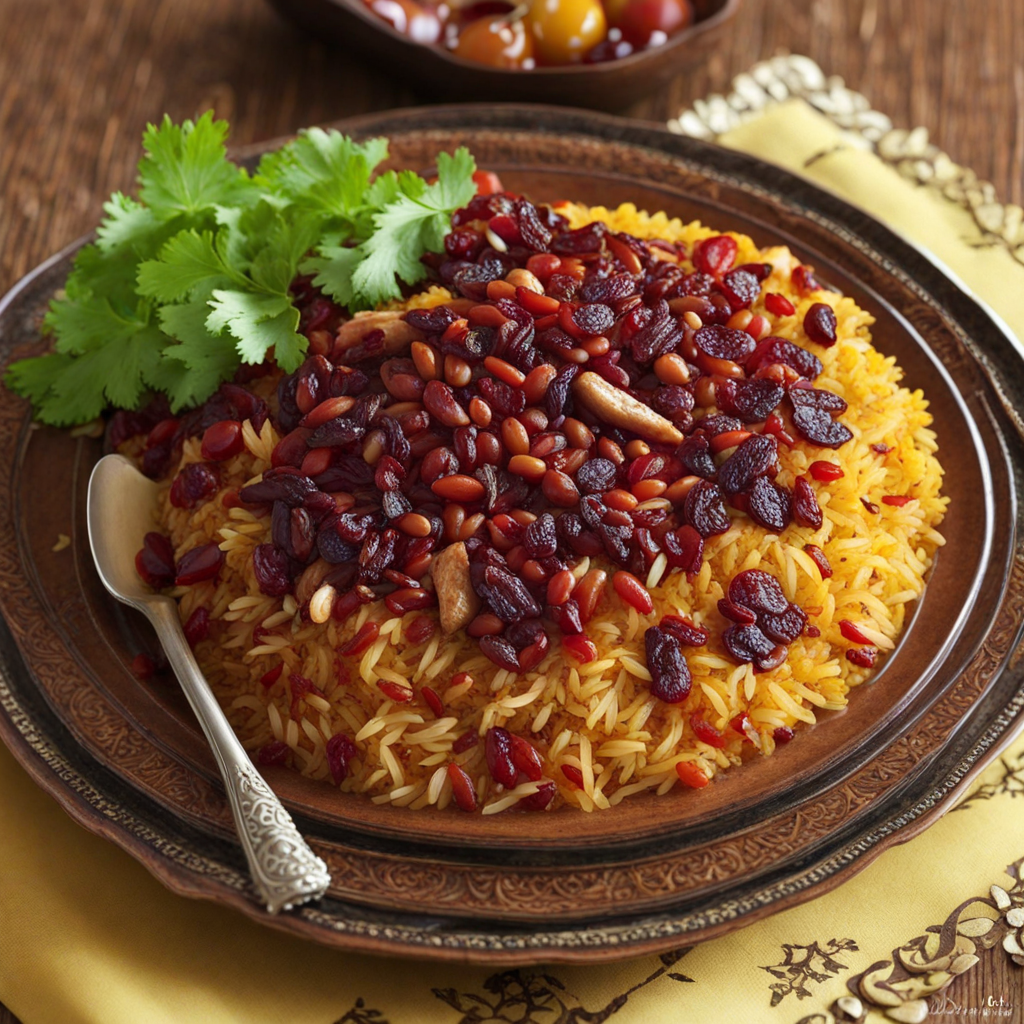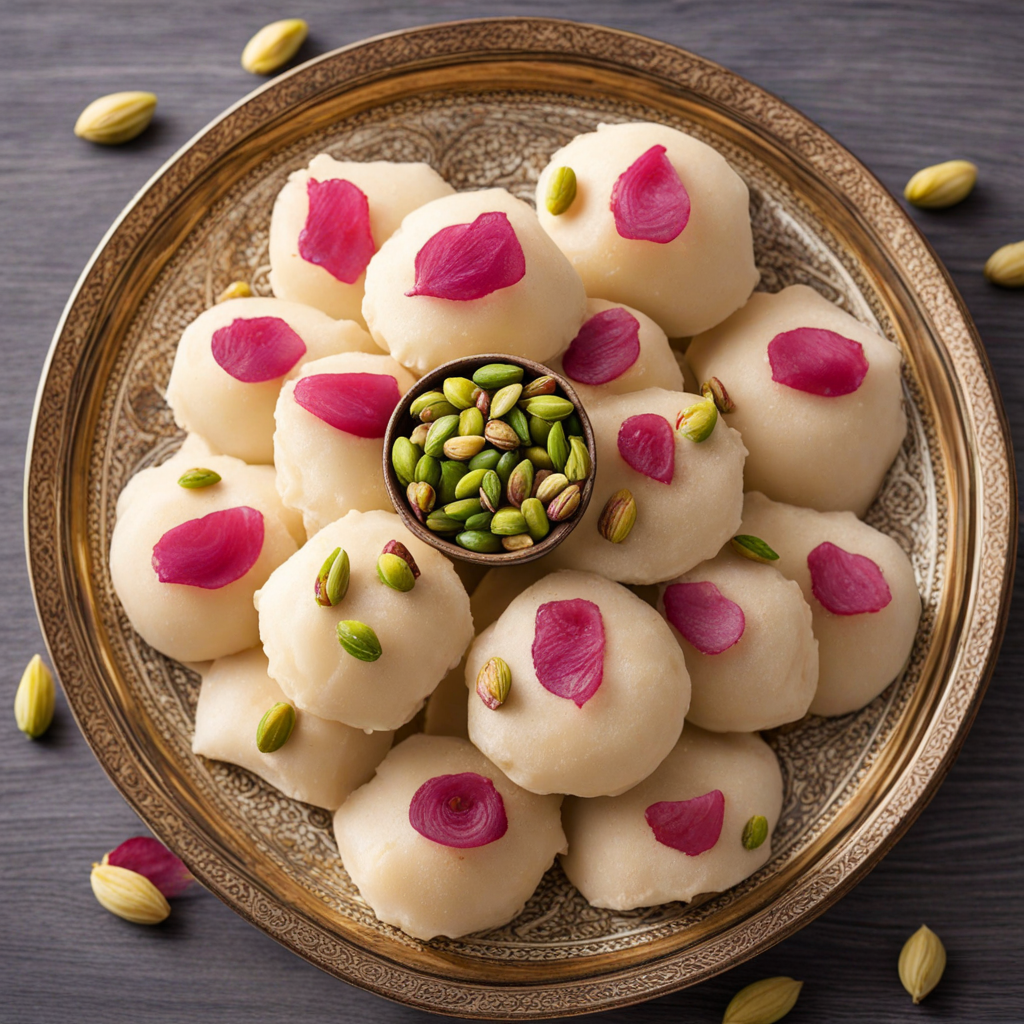Faloodeh
Faloodeh is a delightful Persian dessert that offers a unique combination of flavors and textures. This traditional Iranian treat is made from thin, translucent rice noodles, which are prepared in a sweetened rosewater syrup. What sets Faloodeh apart is its refreshing taste, often heightened with the addition of lime or lemon juice, creating a perfect balance between sweetness and tartness. The noodles are typically served chilled, making it an ideal dessert for warm weather and a refreshing end to a meal. As you savor Faloodeh, you'll notice the delicate floral notes from the rosewater, which impart an aromatic quality that elevates the dessert. The rice noodles have a chewy yet tender texture, creating a pleasant mouthfeel that is both satisfying and intriguing. Some variations of Faloodeh may include crushed ice or fruit, which add an additional layer of refreshing coolness and flavor, enhancing the overall experience. This dessert is often garnished with pistachios or almonds, providing a delightful crunch that contrasts beautifully with the soft noodles. In Iran, Faloodeh is not just a treat; it is a cultural experience often enjoyed during gatherings and celebrations. With its unique taste and refreshing qualities, Faloodeh invites you to explore the rich culinary heritage of Iran while offering a taste of something truly special.
How It Became This Dish
Origins of Faloudeh Faloudeh, a traditional Persian dessert, boasts a rich history that traces back over a thousand years. Its origins can be linked to ancient Persia, where the art of ice-making and the creation of refreshing desserts were first developed. The word "faloudeh" is derived from the Arabic "faludhaj," which refers to a type of sweet dish made from starch and sugar. The earliest records suggesting the existence of this delightful treat can be found in Persian poetry and literature, indicating its integral role in the culinary landscape of ancient Iran. The primary ingredient in faloudeh is starch, typically derived from rice or vermicelli-like noodles. These noodles are cooked in water, then mixed with sugar and flavored with rosewater, providing a unique and aromatic taste. The dish is often served with a variety of toppings, such as lime juice, crushed pistachios, and sometimes, a drizzle of syrup made from fruits like cherries or sour plums. This combination of textures and flavors makes faloudeh a refreshing dessert, particularly enjoyed during the hot summer months. \n\n Cultural Significance Faloudeh is not just a beloved dessert; it holds a significant place in Iranian culture and hospitality. Traditionally served at celebrations and special occasions, faloudeh embodies the spirit of sharing and friendship. It is often enjoyed during family gatherings, weddings, and religious festivals, where its cooling properties provide relief from the heat and sweetness symbolizes joy and festivity. In Iranian society, the preparation of faloudeh is an art form that has been passed down through generations. Families often have their own unique recipes, which may include variations in ingredients or presentation, making each version special. The use of fresh and high-quality ingredients is paramount, reflecting the Persian dedication to culinary excellence. The dessert is often presented elegantly, garnished with vibrant colors and aromatic herbs, enhancing its appeal. \n\n Development Over Time As time progressed, faloudeh evolved, influenced by regional variations and the introduction of new ingredients. While the classic version remains popular, modern interpretations have emerged, incorporating ingredients like saffron, cardamom, or various fruit purees. In recent years, chefs around the world have taken inspiration from faloudeh, experimenting with different textures and flavors, turning it into a fusion dessert. Faloudeh's popularity has also spread beyond Iran. It can now be found in various Middle Eastern countries, each adding its own twist to the classic recipe. For instance, in Turkey, a similar dessert called "dondurma" incorporates ice cream-style techniques, while in neighboring countries like Iraq and Lebanon, variations of faloudeh are enjoyed as well. These adaptations highlight the dessert's versatility and the shared culinary heritage of the region. \n\n Regional Variations In Iran, faloudeh can be found in different regions, each boasting its own unique twist on the recipe. For instance, the city of Shiraz is particularly famous for its faloudeh, often considered the birthplace of this delectable treat. Shiraz faloudeh is distinguished by its use of thin rice noodles and the addition of sour cherry syrup, which lends a tart contrast to the sweetness of the dish. This regional pride has led to Shiraz faloudeh being recognized as a cultural emblem of the city. Other cities, such as Isfahan and Yazd, have their own variations as well. In Isfahan, faloudeh might be served with a sprinkle of cinnamon and a touch of cardamom, while in Yazd, the dessert may include additional toppings like crushed nuts or dried fruits. These regional differences showcase the diversity of flavors and textures found within Persian cuisine, making faloudeh a vital part of Iran's culinary identity. \n\n Faloudeh in Modern Gastronomy In contemporary times, faloudeh has found its way into the menus of upscale restaurants and cafes, both in Iran and internationally. Chefs are reimagining this traditional dessert, often presenting it in innovative forms or pairing it with modern culinary techniques. For example, faloudeh parfaits have gained popularity, layering the classic ingredients with contemporary elements like sorbet or flavored foam. The rise of health-conscious dining has also influenced the evolution of faloudeh. With an increasing focus on natural and organic ingredients, many chefs are opting for alternative sweeteners and gluten-free versions, catering to diverse dietary preferences. This adaptability ensures that faloudeh remains relevant in today's culinary landscape, appealing to both traditionalists and the health-conscious. \n\n Conclusion on Faloudeh's Enduring Legacy Ultimately, faloudeh represents more than just a sweet treat; it is a symbol of Iranian culture, history, and hospitality. Its enduring legacy is a testament to the timeless allure of traditional foods, which continue to adapt and thrive in an ever-changing world. As faloudeh evolves, it remains a cherished dessert that connects generations and brings people together, celebrating the rich tapestry of Persian culinary heritage. In enjoying faloudeh, one partakes in a slice of history, savoring the flavors of a culture that has embraced the art of sweetness for centuries.
You may like
Discover local flavors from Iran


